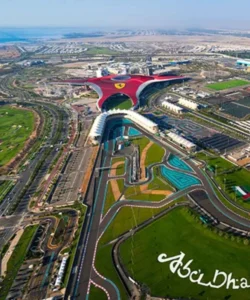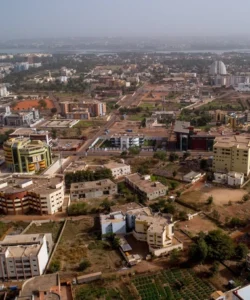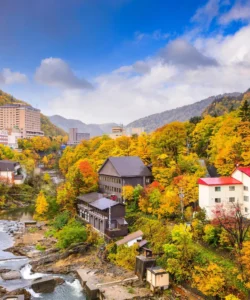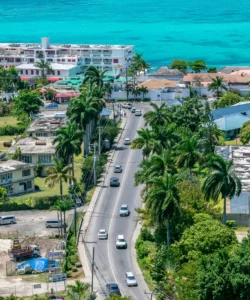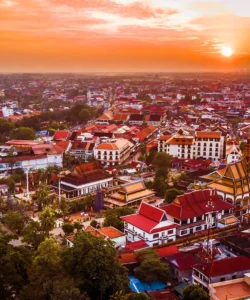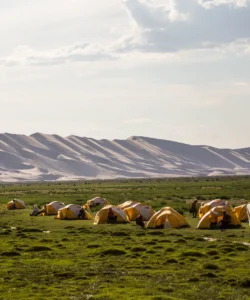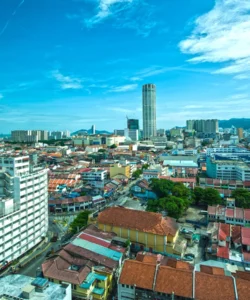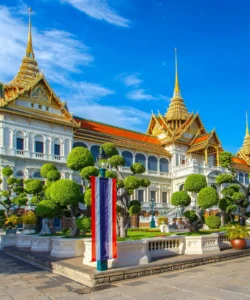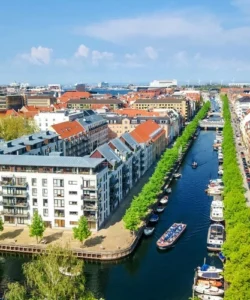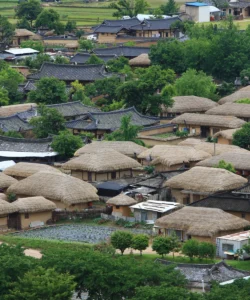Ethiopia is a landlocked country in the Horn of Africa with a rich and complex history. It is the second-most populous nation on the continent, and it is known for its unique culture, ancient Christian heritage, and stunning diverse landscapes.
![]()
Area: Approximately 1,128,571 to 1,136,240 sq. km.
Population: Around 126.5 million people (2023), making it the second most populous nation in Africa.
Language: While there are between 45 and 86 languages spoken, Amharic is the government’s official language and a widely used lingua franca. Oromo is the most widely spoken primary language. Tigrinya and Afar are also significant regional languages.
Currency: Ethiopian Birr (ETB).
Religion: The most numerous religion is Christianity (predominantly Ethiopian Orthodoxy, followed by P’ent’ay and Roman Catholicism), whose adherents collectively form 67.3% of the population. Islam is adhered to by 31.3%.
Capital: Addis Ababa. It is also the fifth-highest capital city in the world.
Major Cities: Besides Addis Ababa, other significant cities include Erer, Dire Dawa, Awasa, Gondar, Mek’ele, Nazrēt, Bahir Dar, Dessie, and Jimma.
Attractions & Wonders:
- Lalibela: Home to 11 monolithic rock-hewn churches from the medieval period, a UNESCO World Heritage site and a true architectural marvel.
- Simien Mountains National Park: A UNESCO World Heritage site known for its dramatic landscapes, unique flora and fauna, including the endangered Walia ibex and gelada baboons.
- Axum: The birthplace of Ethiopian civilization, famous for its ancient stelae and historical sites.
- Danakil Depression: One of the hottest and lowest places on Earth, featuring vibrant sulfur springs, salt flats, and volcanic landscapes.
- Lake Tana and the Blue Nile Falls (Tis Issat): Lake Tana is the largest lake in Ethiopia and the source of the Blue Nile River, with numerous ancient island monasteries. The Blue Nile Falls are a spectacular natural wonder.
- Harar Jugol: An ancient walled city and one of the oldest Islamic cities in the world, also a UNESCO World Heritage site, known for its unique culture and architecture.
- Bale Mountains National Park: A biodiversity hotspot, important for endemic Ethiopian wildlife like the Ethiopian wolf and mountain nyala.
- Gondar: Often called the “Camelot of Africa,” this historical city is famous for its royal palaces and medieval castles within the Fasil Ghebbi complex, a UNESCO World Heritage site.
Architecture: Ethiopian architecture is diverse, reflecting its long history and varied cultural influences. Common materials include stone, mud brick, and wood. Key styles and periods include:
- Aksumite period: Characterized by large stone structures like stelae and obelisks, and churches with distinctive arches and domes.
- Zagwe period (Lalibela): Famous for the incredible rock-hewn churches carved directly from living rock.
- Gonderine period: Known for royal castles and fortified compounds, often incorporating elements from various architectural traditions.
- Islamic architecture: Introduced during the 16th century, featuring domes, arches, and columns.
- Vernacular architecture: Includes unique structures like the beehive-shaped Sidama houses and stone-built Tigray houses.
- Later influences: The late 19th and 20th centuries saw the introduction of Neoclassical, Art Deco, and Modernist (including Brutalism) styles.
Roads: Ethiopia has a network of national roads, including expressways like the Adama–Awash Expressway and Addis Ababa–Adama Expressway. Road infrastructure continues to develop.
Hotels: While luxury accommodation was once limited, Ethiopia now offers an increasing number of good to excellent hotels, lodges, and camps, particularly in Addis Ababa and tourist-heavy areas like Lalibela. Examples include Ethiopian Skylight Hotel, Sheraton Addis, Hyatt Regency Addis Ababa, Kuriftu Resort & Spa Bishoftu, and various lodges in national parks and cultural sites.
Restaurants: Ethiopian cuisine is renowned for its unique flavors and vibrant colors. Restaurants offer traditional dishes, often served communally on large platters with injera. Many cities, especially Addis Ababa, have a range of dining options from local eateries to more upscale establishments.
Cuisine: Ethiopian cuisine is a must-try for food lovers. Key dishes include:
- Injera: A spongy, sourdough flatbread that serves as the staple and often the utensil for most meals.
- Doro Wat: A spicy chicken stew, often considered a national dish.
- Tibs: Sautéed meat chunks (beef, lamb, or goat) seasoned with Ethiopian spices.
- Kitfo: Minced meat dish, often enjoyed raw or lightly cooked with Ethiopian butter and spices.
- Misir Wat: A hearty red lentil stew simmered with Berbere spice mix.
- Gomen: Cooked collard greens.
- Shiro: A creamy and comforting chickpea flour-based dish.
- Spices: Ethiopian food is generously seasoned with authentic spices and herbs, notably Berbere (a fiery red chili blend) and Mitmita (a spicy seasoning mix).
Annual Travel: In the 2023/2024 fiscal year, Ethiopia recorded 1,148,050 international tourist arrivals, generating USD 4.3 billion in revenue.

